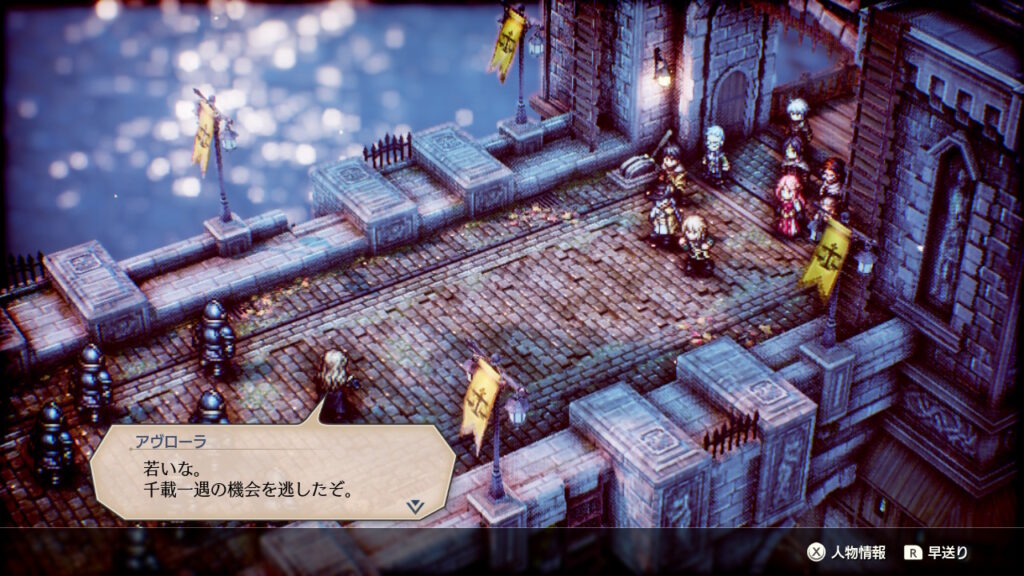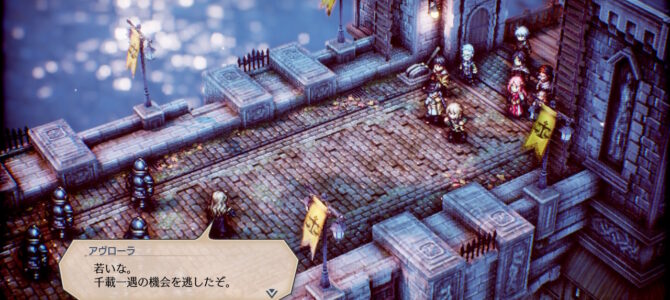The Nintendo Switch is region free, and many (not all) games, including the demo for Project Triangle Strategy, have the full Japanese text and audio available in the U.S. release of the game. No need to import from Japan! This is an amazing resource for gamers who are learning Japanese. Here’s my latest grab!

Japanese: 若いな。千載一遇の機会を逃したな。
Romaji: wakaina. senzaiichigu no kikai wo nogashita na
English: You’re young. You just missed the chance of a lifetime.
千載一遇 (senzai ichiguu) is a four-character phrase that means, “once in a lifetime.” More literally, it means out of one 1,000 one will get it only once. Like most of the language I post on this site, I didn’t know this phrase before playing the game. The word 機会 kikai is simply opportunity, and the verb 逃した is past tense of ‘nogasu’ which means to miss.
Language aside, who is hype for this game? Tactics Ogre: Let us Cling Together was one of the first Japanese-language games I imported and played as a kid. My flying winged dude with the spear was ultra powerful. The game was hard, so slow going, but so interesting. Now that I’m older, turn-based strategy games really hit the sweet spot.
I hope Project Triangle Strategy has some sort of permadeath. Even if it’s not real permadeath like Fire Emblem hard mode, I hope there is something to force the player to be extra careful during a battle. The tension that is created by permadeath makes me think a little longer about each move, and bite my nails a little harder when the AI is moving, which really brings out the “strategy” aspect of a strategy game.
So far it looks like Project Triangle Strategy will have plenty of voice acting, which I love, and combat details like altitude advantages, and the ability to push enemies off ledges and onto adverse terrain. So fun!
Check my Twitter account @Japannewbie for more occasional Japanese language tidbits from games.




































